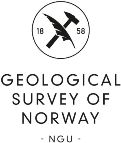

|
Norsk versjon | ||||
| THE INDUSTRIAL MINERAL DATABASE | |||||
| Deposit Area 2020 - 323 | |||||
| (Last updated 24.feb.2004) | |||||
Name of Deposit Area : Skoganvarri |
| (Object Id : 2020,323,00,00) |
| Location |
| County : | Finnmark (20) | Municipality : | Porsanger (2020) |
| Map 1:50000: | Skoganvarre (2034-4) | Map 1:250000: | Karasjok |
| Marking point: | Longitude: | 25.1007530 | Latitude: | 69.8399000 |
| EU89-UTM Zone 35 | (Coordinates NOT confirmed) |
| X-coord: | 426957 m. | Y-coord: | 7749155 m. |
|
|
| Commodity |
| Main Type: | Olivine | Sub Type: | Ultramafic (unspec.) |
| Importance |
| Public: | Not Assessed (reg. 18.02.2015) |
| Economical: | Not classified/evaluated |
Mineralization |
| Era: | Period: | |||
| Dating: | Method: | |||
| Genesis: | Form: | |||
| Main texture: | Min. distribution: |
| Main grain size: |
| Strike/Dip: | Direction: | |||
| Plunge: |
| Stratigraphic classification of host rock |
| Era: | Period: |
| Province: | ||
| Geotec.unit: | ||
| Tectonic complex: | ||
| Igneous complex: |
| Group: | Formation: |
Bibliography: |
| From NGU's Reference Archive: |
| Siedlecka, A. , 1987 |
| Skoganvarre. Berggrunnskart; Skoganvarre; 20344; 1:50 000; sort/hvitt; |
| ;Norges geologiske undersøkelse;KART |
| Siedlecka, Anna; Roberts, David , 1996 |
| Finnmark fylke. Berggrunnsgeologi Finnmark fylke M 1:500 000; trykt i farger |
| ;Norges geologiske undersøkelse;KART |
| Abstract: | |
| Beskrivelsen finnes på kartet. |
| Krill, Allan G. , 1985 |
| Svekokarelian thrusting with thermal inversion in the Karasjok-Levajok area of the northern Baltic Shield |
| ;Norges geologiske undersøkelse;TIDSSKRIFTARTIKKEL;NGU Bulletin; No.403;89-101 pages |
| Abstract: | |
| Recent mapping, isotopic dating, and metamorphic and structural observations from the Karasjok-Levajok are, lead to a tectonic interpretation that is similar in many ways to Phanerozoic plate tectonic models. Three major belts of Early Proterozoic rocks lie between two Archean gneiss complexes: the Jer'gul Gneiss Complex on the west and the Baisvarri Gneiss Complex on the east. The E-dipping Early Proterozoic belts are, from west to east: the Karasjok Greenstone Belt, the Tanaelv Migmatite Belt, and the Levajok Granulite Belt. Earlier geochemical studies suggested that the Tanaelv Migmatite Belt consists mainly of tholeiitic metavolcanites of an outer volcanic are, and that the Levajok Granulite Belt represents geosynclinal metasediments intruded by calc-alkaline rocks of an inner magmatic arc. It is suggested here that basaltic rocks related to the Karasjok Greenstone Belt were subducted eastward, generating the arc magmatism, and contributing heat and CO2 to produce the granulite-facies metamorphism. During later stages of the Svecokarelian event, thrusts developed parallel to the subduction zone. The granulites were thrust westward over the migmaties, which were in turn thrust also developed within and beneath the Karasjok Greenstone Belt. Thrusting of the granulite belt occurred at granulite-facies conditions and the heat from these rocks contributed to an inverted regional metamorphic gradient within the underlying Tanaelv Migmatite Belt and Karasjok Greenstone Belt. The metamorphic grade within the Karasjok Greenstone Belt increases from low grade in the western, deepest parts, to medium grade and migmatitic high grade upward, near the overlying Tanaelv Migmatites. Kyanite-bearing rocks in the deeper parts of the Karasjok Greenstone Belt contrast with sillimanite-bearing rocks in the shallower parts, and demonstrate that the metamorphism was in-situ, and n |
| Often, Morten , 1985 |
| The Early Proterozoic Karasjok Greenstone Belt, Norway. A preliminary description of lithology, stratigraphy and mineralization. |
| ;Norges geologiske undersøkelse;TIDSSKRIFTARTIKKEL;NGU Bulletin; No.403;75-88 pages |
| Abstract: | |
| The Karasjok Greenstone Belt of Finnmark, Norway, is a sequence of medium-grade metmorphic supracrustal rocks in the northernmost part of the Baltic Shield. Regional mapping has revealed a tectonostratigraphy with the greenstone belt resting on Archaean sialic basement, dipping away under the Tanaelv Migmatic Complex with the Levajok Granulite Complex on top. Major thrust zones separate the lowermost part of the greenstone belt, the clastic Skuvvanvarri Formation, from the mixed volcanic-sedimentary Iddjajav'ri Group. High grade thrust zones also separate the migmatic and granulitic complexes feom the greenstone belt. Pyroclastic komatiites constitute an important part of the Issjaja'ri Group, suggesting volcanism in a shallow-water environment. A plate-tectonic concept is applied to describe the evolution of the greenstone belt which is probably of Earth to Middle Proterozoic age. Mineralizations within the Karasjok Green- stone Belt are classified and briefly described. Thw two most important types are manganiferous banded iron-formations of Algoma type and large low-grade disseminated copper-gold mineralizations of uncertain origin. |
| The fact sheet was created on 22.11.2024 |
| Questions or comments regarding the fact sheet can be emailed to: ressursdatabaser@ngu.no |
| Copyright © 2024 Geological Survey of Norway |